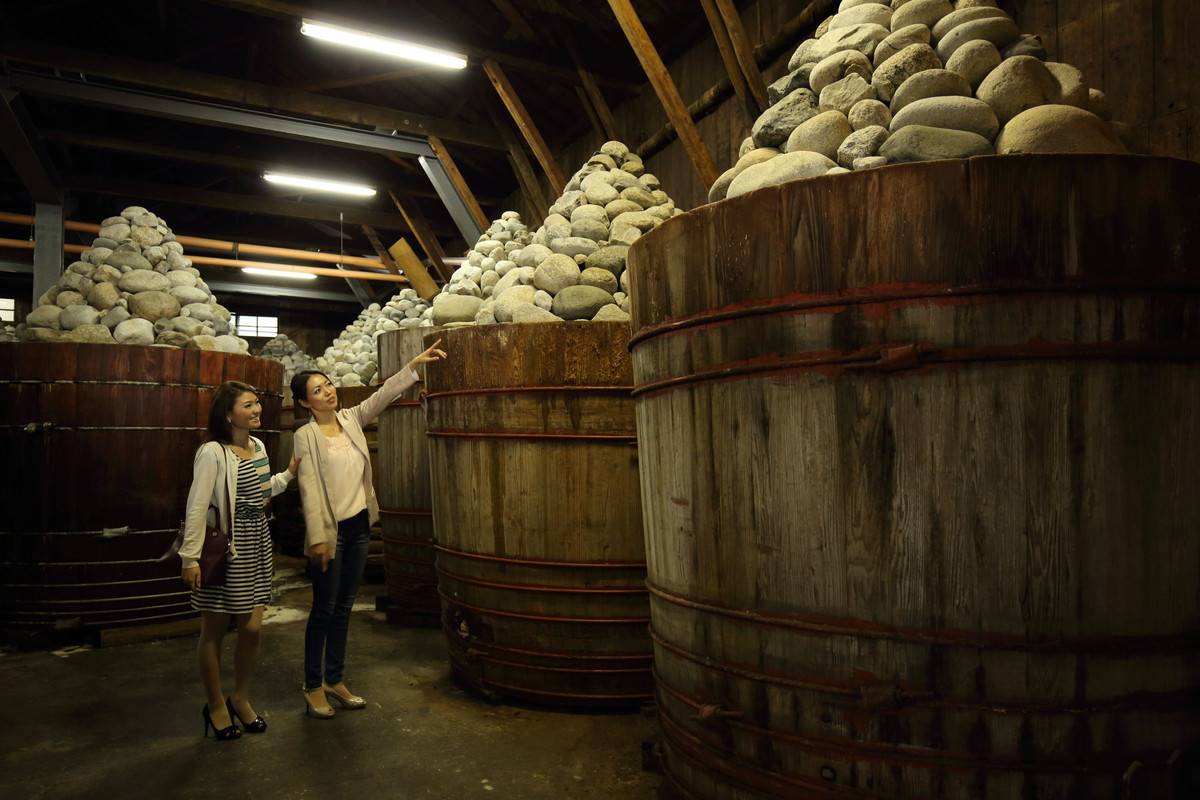Japan’s food makers eye ‘fermentation tourism’

Manufacturers of miso paste and soy sauce, widely produced in Japan’s central region, are betting on inbound tourists having a yen for Japanese fermented foods and the rich traditions of Japanese cuisine.
More foreign visitors have started taking tours of factories dedicated to the production of soybean paste—said to have been a favorite of Tokugawa Ieyasu, the country’s first shogun in the 17th century—and eating out at traditional Japanese “ryotei” restaurants.
The allure of dishes such as “narezushi,” the earliest form of Japanese sushi made by fermenting fish in rice, served at the establishments, gives tourists much to write home about.
Yet despite being a favorite of seafood lovers, the fish has a distinctive pungent aroma that some describe as “sewage-like.”
“The traditional manufacturing process looks fresh and is appealing to a widening fan base,” pointed out one tourism official, adding that plans are underway to conduct factory tours by trained guides to introduce fermented specialties of the Tokai region.
Miso brewery
Foreign visitors who toured Maruya Hatcho Miso Co., a miso production factory in Okazaki, Aichi Prefecture, with a nearly 700-year history, said they admired how the long, labor-intensive process of manufacturing miso is taken for granted these days.
Founded in 1337, the company has preserved its time-honored method since before the Edo period, placing high-quality soybean koji, salt and water in large wooden vats, sealing them with a pyramid of heavy rounded stones and leaving them untouched for two full years.
In recent years, the factory has attracted visitors not only from within Japan but also from Taiwan, Europe, and other parts of the world. “We wish to convey a true sense of Japanese culture from our small brewery,” said Maruya Hatcho President Nobutaro Asai, 75.
Kawaramachi Izumiya, a ryotei restaurant in Gifu, central Japan, which serves fermented and aged narezushi made by adding rice to salted ayu sweetfish, has been attracting several groups of foreign tourists each week since last year.
Zenhichi Izumi, 58, the owner of the restaurant, has developed new dishes popular among foreign guests, including a narezushi featuring ayu sweetfish with fish roe and ramen noodles flavored with ayu sweetfish seasoning sauce.
Warm climate, ideal conditions
“My hope is they can enjoy a taste that they can only experience here,” Izumi said.
Masashi Kato, 60, a professor of applied microbiology at Meijo University, explained that agriculture has long flourished in the Tokai region, where beans and rice are abundant.
The warm, humid climate provides ideal conditions for brewing, enabling the production of a wide variety of fermented foods.
Health-conscious Tokugawa Ieyasu, the first Edo shogun and unifier of Japan, was a big fan of “hatcho miso” soybean paste due to its robust source of protein that he would supply to his armies.
Ieyasu, whose military shogunate spanned from 1603 to the start of the Meiji Restoration in 1868, lived to the age of 75, far exceeding the average life expectancy of his era.
With a nod to culture, an executive committee for “fermentation tourism” was officially launched in August this year, cosponsored by Central Japan Railway Co. and the tourist association of the city of Handa in Aichi Prefecture, home to vinegar producer Mizkan Holdings Co.
‘All five senses’
A pretour of sake and miso breweries held in October 2023 was well received by the 35 participants from nine countries, mostly from Europe and the United States. The committee plans to begin full-scale group tours from the Tokyo metropolitan area and abroad in May next year.
Hiroshi Sakakibara, 46, committee executive director, said, “We would like to propose tours that allow visitors to experience the traditions through all five senses.”
Plans are also underway to train tour guides familiar with traditional manufacturing methods.
Sakiko Yoshida, 46, who has been organizing her own group tours of fermented food producers, has launched a project to certify aspiring expert tour guides after they have undergone lectures and on-the-job training at production sites.
“We want to develop human resources—people who can serve as a point of contact between producers and consumers and support local cultures,” she said.





















